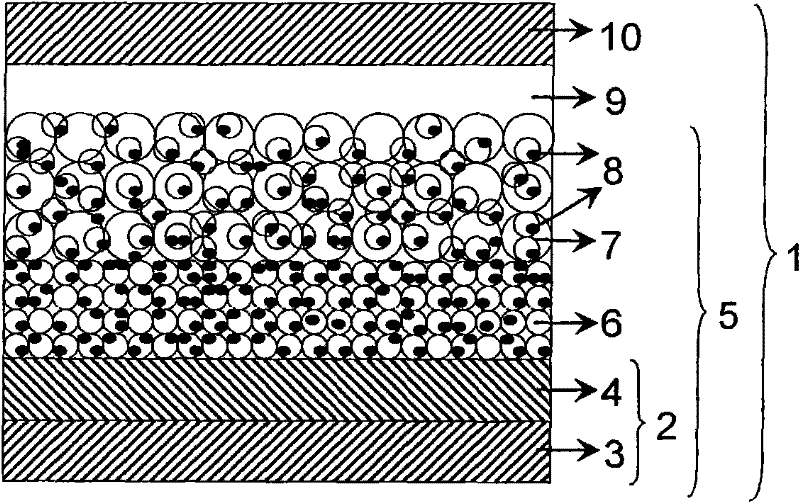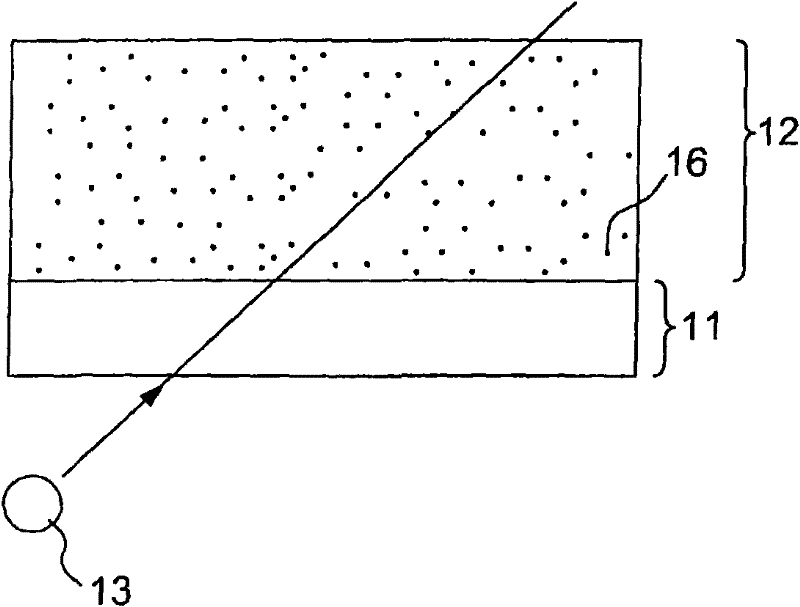Dye-sensitized solar battery using compound semiconductor material
A technology of solar cells and compound semiconductors, applied in the field of dye-sensitive solar cells, can solve the problems of poor efficiency of battery components and short straight-line travel paths, etc.
- Summary
- Abstract
- Description
- Claims
- Application Information
AI Technical Summary
Problems solved by technology
Method used
Image
Examples
Embodiment Construction
[0017] The semiconductor material layer used in the dye-sensitive solar cell of the present invention comprises a compound semiconductor material layer, the compound semiconductor material layer comprises a compound semiconductor material, and the compound semiconductor material comprises first semiconductor material particles and particles coated on the surface thereof Inorganic particles, and the compound semiconductor material has about 15 to about 80m 2 / g specific surface area, the compound semiconductor material layer can simultaneously serve as a light scattering layer and a photosensitizer adsorption layer. According to a specific embodiment of the present invention, the compound semiconductor material has a thickness of about 20 to about 60m 2 / g specific surface area, and the particle size ratio of the inorganic particles to the first semiconductor material particles (particle size of the inorganic particles / particle size of the first semiconductor material particles...
PUM
| Property | Measurement | Unit |
|---|---|---|
| specific surface area | aaaaa | aaaaa |
| specific surface area | aaaaa | aaaaa |
| particle diameter | aaaaa | aaaaa |
Abstract
Description
Claims
Application Information
 Login to View More
Login to View More - R&D Engineer
- R&D Manager
- IP Professional
- Industry Leading Data Capabilities
- Powerful AI technology
- Patent DNA Extraction
Browse by: Latest US Patents, China's latest patents, Technical Efficacy Thesaurus, Application Domain, Technology Topic, Popular Technical Reports.
© 2024 PatSnap. All rights reserved.Legal|Privacy policy|Modern Slavery Act Transparency Statement|Sitemap|About US| Contact US: help@patsnap.com










